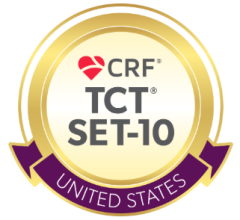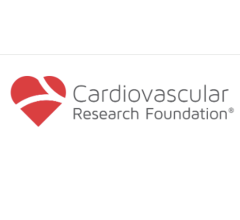
November 9 2021 — A new large-scale, real-world analysis of Centers for Medicare and Medicaid Services (CMS) outcomes data from of peripheral vascular interventions guided by intravascular ultrasound (IVUS) showed a 32% reduction in major adverse limb events, such as amputations, during lower extremity arterial intervention.
The study was conducted independently by the Smith Center for Outcomes Research, with the results presented at the 2021 Transcatheter Cardiovascular Therapeutics (TCT) meeting by Eric A. Secemsky, M.D., director of vascular intervention and interventional cardiologist at Beth Israel Deaconess Medical Center and assistant professor of medicine at Harvard Medical School in Boston.
Numerous prospective studies have already shown the benefit of IVUS guidance in peripheral vascular interventions, making it a gold-standard imaging modality for this application. The new study results now show that the outcome observations from these prior studies apply directly to a broader peripheral arterial and peripheral venous intervention patient population, demonstrating strong support for the use of IVUS during peripheral interventions.
“The results of this large-scale study demonstrate favorable long-term outcomes in peripheral vascular interventions when IVUS is used,” Secemsky said. “This analysis, combined with the recent appropriate use consensus on IVUS that was presented at VIVA in October, highlights a clear opportunity to improve health outcomes for millions of patients by broader and more routine implementation of the technology in clinical practice. This is a moment for us to further our efforts in saving lives and saving limbs.”
Peripheral artery disease (PAD): a 32% reduction in major adverse limb events, including amputations, during lower extremity arterial interventions. The study looked at Medicare beneficiaries aged 65 years or older who underwent lower extremity arterial interventions between Jan. 1, 2016, and Dec. 31, 2019. Among 697,794 interventions, the investigators found a 32% reduction in major adverse limb events, such as amputations, over a median 425 days of follow-up. These findings were consistent across disease states, including critical limb ischemia and non-critical limb ischemia, as well as arterial segments such as the iliac (hip area), femoropopliteal (upper leg area) and tibial (lower leg area).
PAD develops when plaque builds up in the vessel wall and reduces blood flow to the limbs, most commonly the legs. It affects more than 8.5 million people in the USA.[1] PAD symptoms include recurrent fatigue, leg pain, and foot or leg wounds that do not heal or heal very slowly. Critical limb ischemia (CLI) is an advanced stage of PAD and is typically associated with high rates of cardiovascular events, amputations, and mortality. CLI patients have low survival rates, with 5-year mortality exceeding 50% [2].
Chronic venous disease (CVD): a 31% reduction in repeat intervention, hospitalization, or death during iliofemoral venous stenting
Separately, the investigators examined Medicare beneficiary data for patients treated between Jan. 1, 2017, and Dec. 31, 2019, in multiple clinical settings, including hospital in-patient settings, hospital outpatient centers, and private office-based clinics, involving 20,984 individual patients. Of these, 72% underwent stenting guided by IVUS. When IVUS was used, there was a 31% reduction in the composite outcome of repeat intervention, hospitalization, or death. In addition, IVUS use reduced the risk of stent thrombosis, embolization and stenosis.
CVD is both a common and underappreciated problem impacting over 30 million Americans.[3] Advanced CVD impacts over 6 million people in the USA and iliofemoral venous obstruction costs as much as $3 billion per year for ulcer care in advanced presentations.[4]
The study, supported by Philips.
First-ever Global Consensus for the Appropriate Use of IVUS in PVD Interventions
In October 2021, a team of clinical experts led by Secemsky established the first-ever global, cross-specialty expert consensus for the appropriate use of IVUS in peripheral vascular disease interventions. This initiative was jointly supported by Philips and Boston Scientific. Today, healthcare providers’ use of IVUS in PVD interventions is not standardized and is therefore inconsistent. The new appropriate-use expert consensus may help establish global standards of care to adopt into guidelines and improve quality of care in PVD.
To achieve consensus, the broad, multi-disciplinary group of global experts used a rigorous methodology. They conducted a systematic and comprehensive review of key clinical IVUS scenarios and decision-making processes before voting on the appropriate use consensus. Through this methodology, the group has established a clinical consensus to identify the optimal use of IVUS and potential knowledge gaps in order to set a standard across clinical specialties and drive positive outcomes for patients. Their findings were shared at a special symposium during Vascular Interventional Advances (VIVA) 2021.
Related IVUS Technology Content:
Advances in Intravascular Ultrasound Technologies
Comparison Chart of IVUS Catheters
Comparison Charts for IVUS Systems
10 Reasons Why You Need Supplemental Imaging in the Cath Lab
References:
1. https://www.ahajournals.org/doi/pdf/10.1161/CIR.0000000000001005


 October 31, 2025
October 31, 2025 









